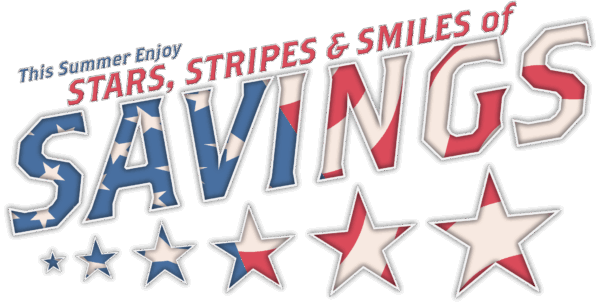Welcome to another episode of America’s smiles, tips, and tricks. Today, I will compare classic white zirconia, Pre-Shaded zirconia, and then multilayer zirconia. I’m going to give you some very distinct opinions based on what I think. I’m going to think that I’m right because, well, I’m doing the video, and you’re not. I do to 250 teeth a day, and if I’m not right, I’m going to go out of business.
We’ve Been Around the Block
Here at America smiles, we’re a membership milling center, and people pay us a membership fee. We help labs through marketing, advertising, and customer acquisition. In return, they get discounts at our milling center. So when I’m doing this kind of volume and people are paying us a membership fee, I have the added burden of putting out high quality. No one’s going to pay me a membership fee and get poor quality, and nobody’s going to overpay pay me for a membership fee. So I’ve got to hit high quality and great price. The way that I do this is through classic white zirconia. I’m going to argue why I think classic is the most affordable, efficient way to purchase your zirconia.
White Zirconia
Number one, it is the cheapest zirconia to buy. So when you buy the actual disk, it’s the cheapest. Number two, you keep the least inventory because all you got to keep are the various sizes. You’re mostly going to use twelve millimeters. So you can have some twelves and some fourteens, sixteens, eighteens, and maybe keep one twenty-five on hand in case you ever need it. It’s also the most efficient for camming or nesting and then milling. As long as I’ve got teeth that all have a common thickness, I can put as many in a puck as I want. I can set it in that machine and forget it making it the most efficient for milling. What this also means is that if you can get your milling machine to run for one hour, hour and a half, two hours, even three hours, nobody’s got to babysit that machine and wait to swap it out. So it becomes very efficient in terms of milling and milling times per unit.
We’ve got this really cool system. We call it, “Incisal Tones”. Yeah, I’m going to brag a little bit. I invented it. It’s got a blocking agent in it. Plus a tone. It could have a grey tone, a blue tone, or a violet tone. It’s got a blocking agent. What we did back in the old days when you layered enamel pores or layered porcelain, now wherever you would layer the enamel, you brush this in incisal tone with the blocking agent, so gray, blue, or violet would be a blocking agent. Then I dip it for, say, a minute and a half; the dipping can’t penetrate where I put that incisal blocker. When this classic white comes out of the centering oven, it looks like layered porcelain. You’ve got the gradient of the darker chrome at the gum line, (a middle grade), and then the inside heavier incisal up at the occlusal third. Even with the classic white, you can get a lovely blend. The inconsistency though is that zirconia of different masses will produce a different color.
Pre-Shaded Zirconia
Now let’s go to pre-shaded. The problem with pre-shaded is that you got to carry all the shades and sizes you can carry—heavier inventory. When you mill, you’ve got a mill, all your C-2’s and all your A-2’s together. What happens is if you only have one C3 case or C2 case, and you run that cycle. Fifteen minutes later, someone had better have eyes on that machine otherwise it sits idle for a half-hour. That tends to make people angry because if you didn’t swap out the mill, you’re wasting time. So you’re not as efficient milling one shade in one thickness at a time. It’s far less efficient, but we got that incisal blend thing down.
We also invented what we call an incisal reducer. Now I actually take that back. We didn’t invent it. We buy it, and we modify it, so we kind of invented it? Regardless, when you do have that pre-shaded disk, wherever the enamel goes, you brush that on. It strips some of the oxides out of there. So since we make this zirconia, we know how to get rid of it. We put the color in it and we know how to get rid of the color. If you’ve got an A3, you brush it on, and it strips some of the colors out of it. So technically, you can use a pre-shaded disk, put it in your centering oven and have it come out looking like layered porcelain again.
So the positives to the pre-shaded, that gingival third, are very consistent. As long as you have their manufacturers, get the shades dialed in, you’re expected to the same shade every time, regardless of the weight or thickness of the zirconia.
Multi-Layer Zirconia
Now let’s bring in the multi-layer. This is my least favorite. Maybe if you have a single unit, it might look okay to get a multi-layer. Let’s face it though, all of us ceramist artists are from back in the eighties. We know how to layer porcelain. We know that you’ve got to zigzag irregularity to the dent, and then the enamel, while the multi-layer is layered flat, there’s not a single natural tooth that has this layer of Denton, this layer of enamel. You don’t have any irregularity, so you can’t imitate the natural look.
You have these other factors in that wherever you put it in the two, let’s say you have a 14-millimeter disk, but your two are solely 13 millimeters, while you can put it too close to the incisal too close to the gingiva and you don’t get the right blend. What if you have that bridge with a nice curve of speed built into it? Well, you have a cuspid it over here, and it’s all enamel. You have a bicuspid it over here, and it’s all dent. Plus, you have a molar over here, and it’s all enamel. So, you get this curve in here or something that’s pitched. All of this makes multi-layer my least favorite as it is the most expensive. If I’m going to build 250 teeth a day and I’ve got to put out a great quality product, I’ve got to be efficient—classic white all day.
And that’s it!
 June 16 - July 11, 2025
June 16 - July 11, 2025

